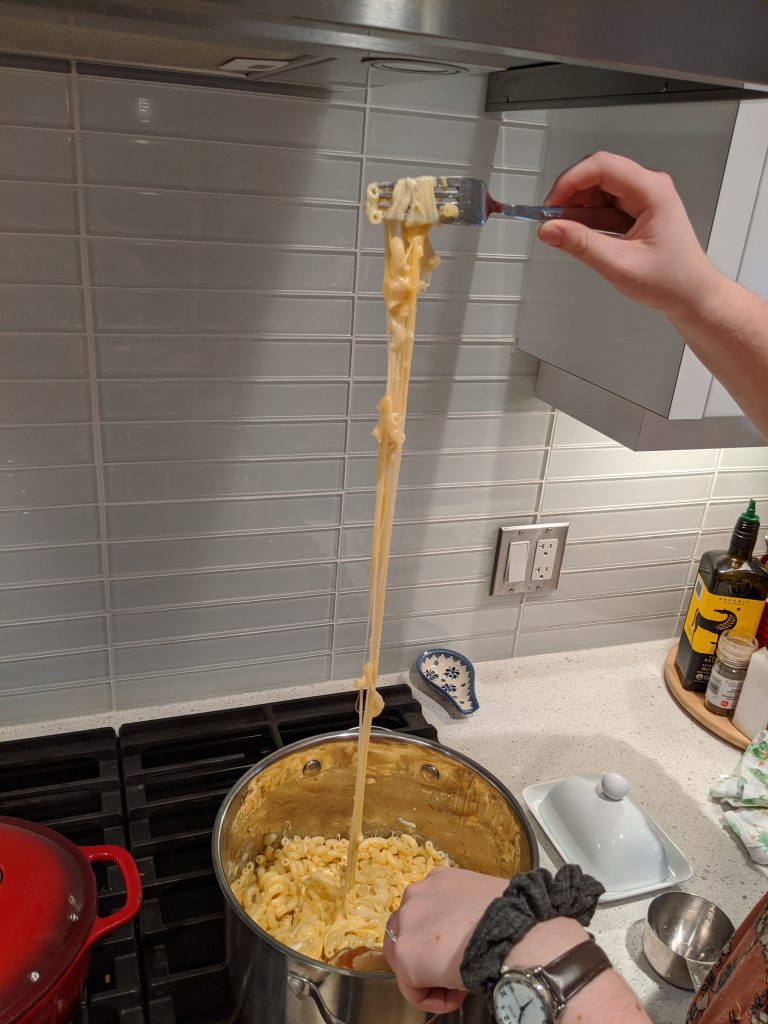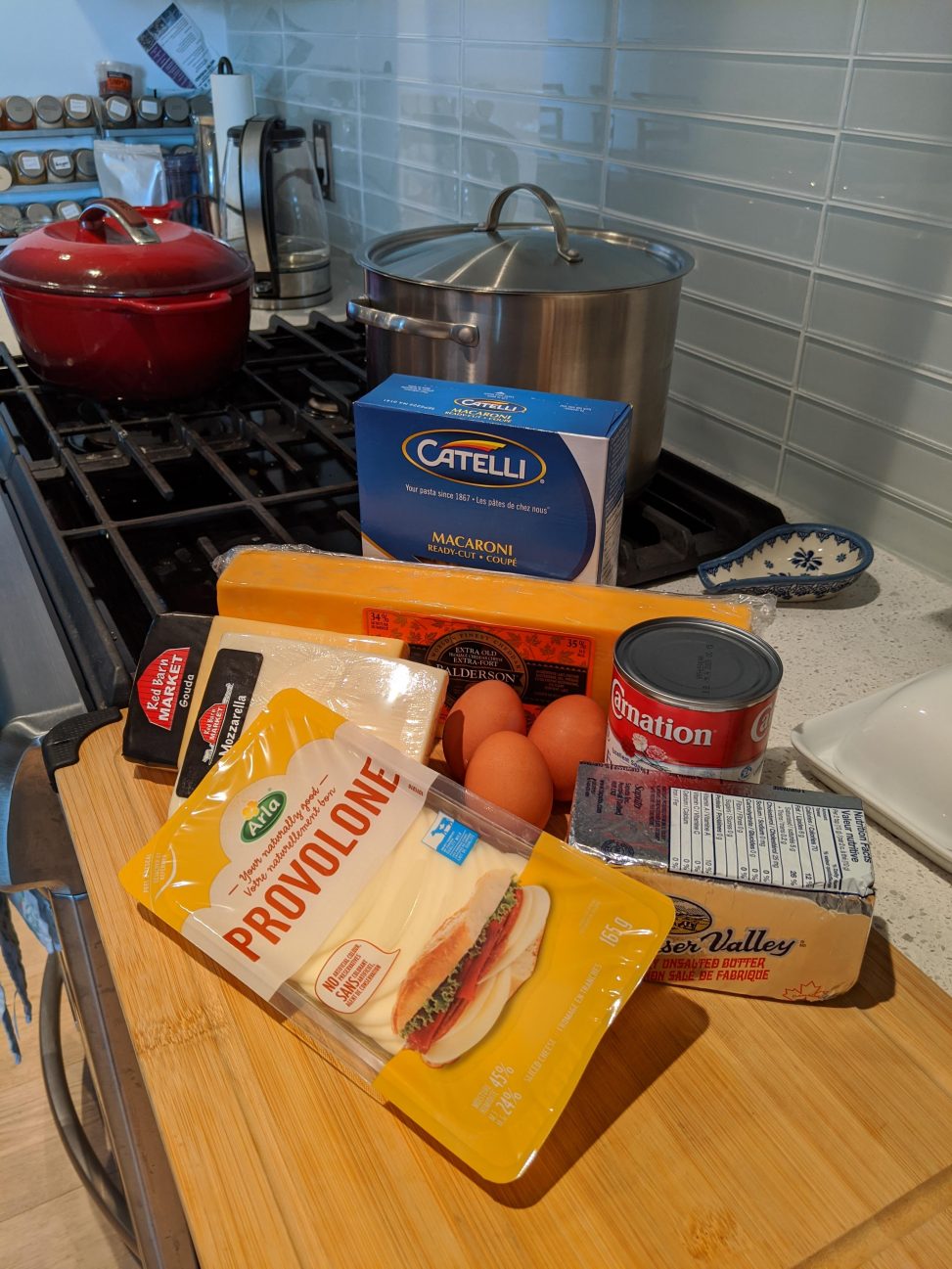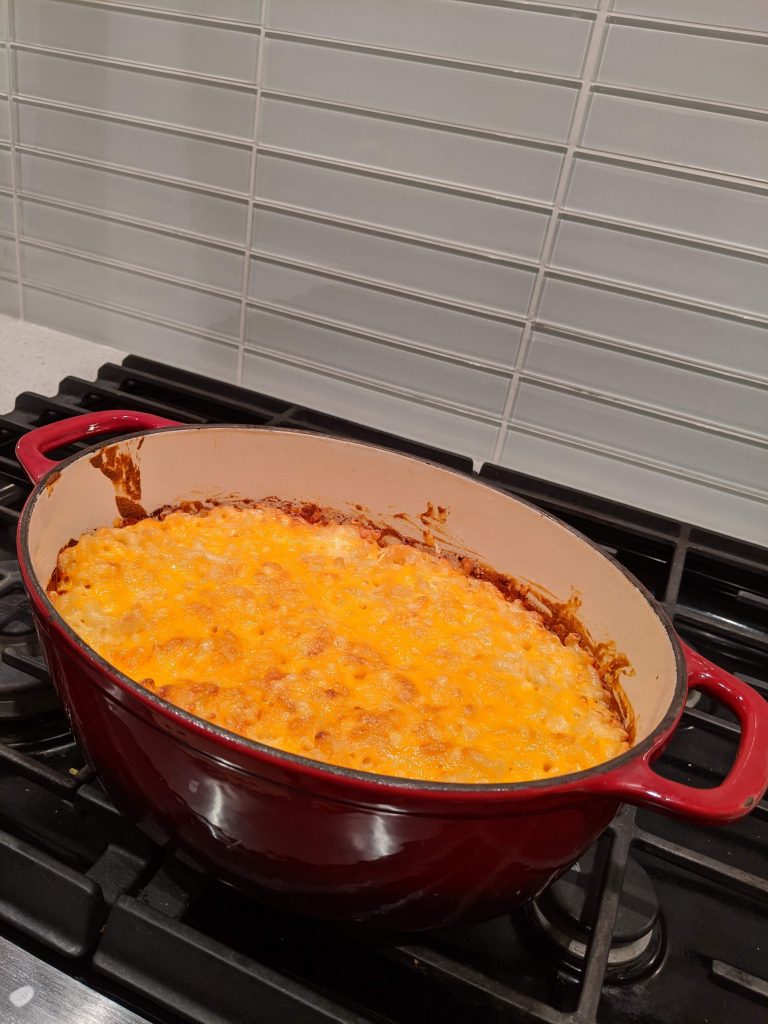This week I attempted to make Chef Lawrence Page’s five-cheese mac and cheese. It did not go well…at all. The summary of my cheesy disaster was that it was less than cheesy. The fat separated out of my cheese while it was baking, causing the cheese to coagulate and the sauce to basically vanish. This was particularly unfortunate, as I was actually making this recipe with my partner and friends. Thus, I then had to feed everyone potentially the worst mac and cheese in history. Everybody was very supportive and understanding, but I felt absolutely horrible.
I think this was an important experience to have on my mac and cheese journey, as none of the other recipes I have made thus far have failed. There was the Gordon Ramsay one that I didn’t enjoy, but that was a case of personal preference, not recipe failure. While a failed recipe is pretty disappointing, I think the whole ordeal holds valuable lessons to be learned.
Lesson 1: If there is a video, watch the video. There was an available video of the chef making this recipe, which I should have watched to supplement my reading of the instructions. Nothing in the video was drastically different, but it did show you what the various stages were supposed to look like, which might have enabled me to correct some mistakes I made along the way. One main difference was that in the video it is quite obvious that the cheese is not melted all the way before being baked. As you can see, I fully melted it.

While it made for a very exciting cheese pull, the correct thing to have done would have been to stir the cheese until incorporated. Not melted.
Lesson 2: If there are comments on an online recipe, READ THEM. If I had simply read the comments, which suggested adjusting the cooking time, I could have potentially saved the recipe. Cutting down on the cooking time would have reduced the amount of fat separation in the cheese, thus maintaining some of the sauce. It was also essential to read these comments as the adverse effects of a long cooking time are not apparent during the process. In other words, I couldn’t tell while it was cooking that anything was wrong, and it even came out looking pretty good on the surface.
Lesson 3: When using an American recipe that involves any kind of processed cheese, make sure to consider that the processing in Canadian cheese is slightly different. The difference in processed cheeses found in Canada is that they have less sodium citrate. Sodium citrate can act as a binding agent that prevents the fat from separating out of the cheese. Thus, if a recipe is originally made with a cheese that has more sodium citrate, and you then use a cheese with less sodium citrate, your cheese is going to separate and you will end up with no sauce. To remedy this you can either find a different recipe, research specific cheeses to use, or buy sodium citrate itself (you can find it on Amazon). The main offender in my case was the provolone seen in the featured image of this post.
Would I attempt to make this recipe again? Absolutely. If you follow the recipe link above you can watch the video, and it looks delicious. I have learned from my mistakes in terms of the process, the cheese, and the cooking time. So, if I ever have time for a redo I will absolutely go for it. I think it would feel really great to succeed after struggling. Hopefully, one day I can make my lovely friends the improved version to make up for this one.
Here is a photo of them looking very smiley despite what is on their plates.



Leave a Reply